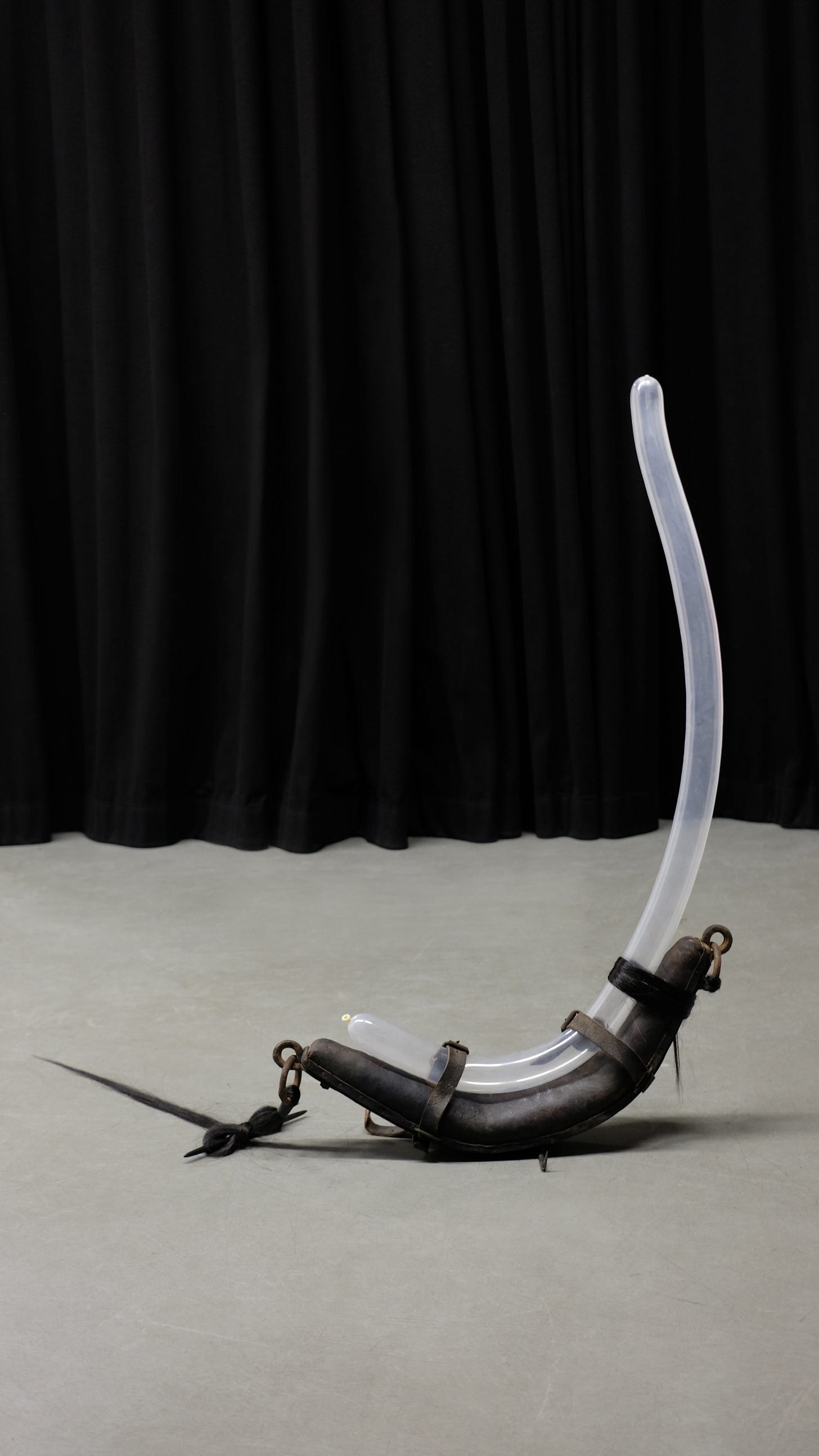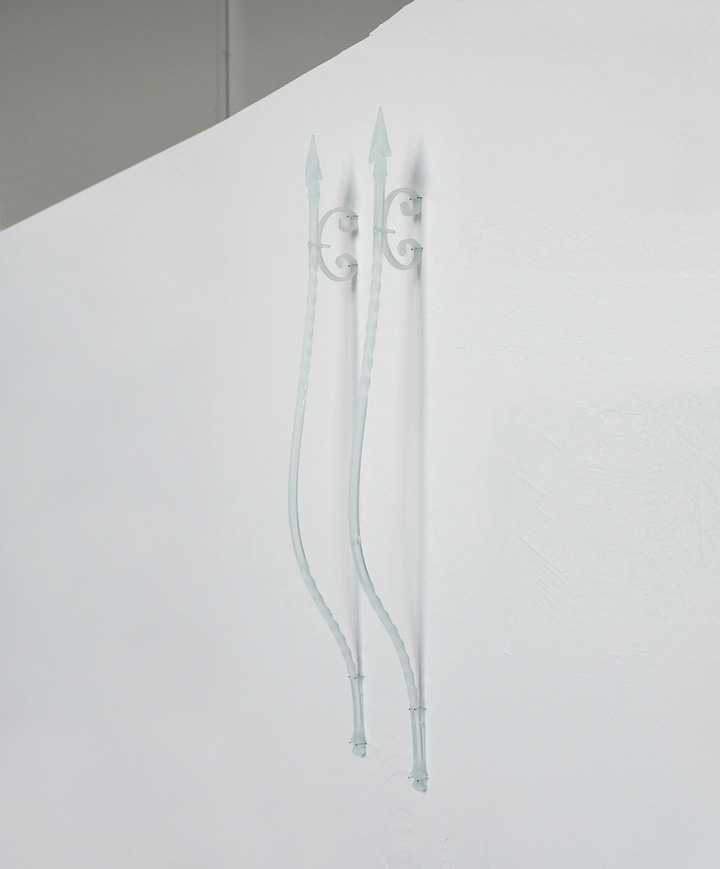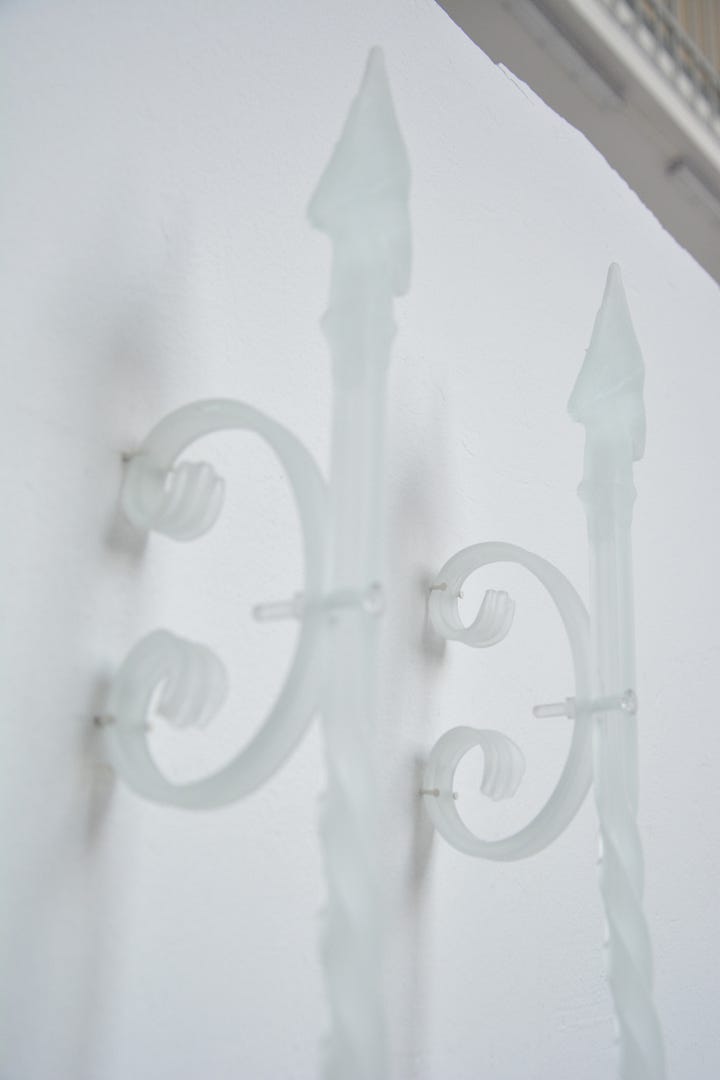Yixuan Hu's Sculptural Philosophy of Absence and Presence
Meet Yixuan Hu, an artist who left her life as an art director in China’s Hunan province to become a sculptor based in Vienna.
Yixuan Hu’s sculptures are a combination of clear shapes that put emphasis on open spaces and the cultural philosophies she grew up with. Her art invites you to pause, reflect, and look beyond the surface – a powerful testament to her belief that both presence and absence can speak volumes in art. Next week, Yixuan will showcase her work in ‘Corporate Unwellness’, offering her unique perspective on revealing how open spaces in her art create depth and harmony.

What inspired your decision to move from China to Austria?
In China, I worked as an art director in an advertising collective, but the relentless working culture left me burnt out and affected my health. After seven intense years, I decided to follow my dream of studying art. Though my background was in fashion design, I never pursued it professionally, which nudged me to apply to art academies in Europe. I moved to Vienna about a year ago, hoping to start fresh in a more creative environment.
To be honest, adapting here has its challenges, especially with the difference in lifestyle and social norms I face here – why must I schedule a hangout with an email? But as they say in Chinese, 越努⼒越幸运: “The harder you work, the luckier you get!” Luck favours those who work hard; you have to be proactive to be able to create your own luck through hard work and determination.
How has living in Vienna shaped your art practice?
The people here inspire me a lot; they have so much energy and positivity! Even with fully packed schedules, the people here still manage to unwind and party. Ultimately, I have learned to embrace the collaborative spirit here; as the Chinese saying goes, 三⼈⾏,必有我师焉 – “When walking in the company of others, there’s always something to learn.” Despite only living here for a year, I’ve been lucky enough to showcase my work in group exhibitions, including the art fair viennacontemporary. Next week, my work will be displayed at a group exhibition called ‘Corporate Unwellness.’ It makes me happy to see how supportive and collaborative the artists in this city are.
ArtNaVee-Gate: Saturday 9th of November, 17:00-20:30
“Symposium: As long as it may take – Künstler*innen in russischer Haft [Artists detained in Russia]” at Belvedere21 (for free!)
Artmov and Belvedere invite you to check out their live broadcast at Belvedere21, where they discuss the struggles of imprisoned artists and activists in Russia. With expert lectures, first-hand insights, and powerful panel discussions, this event will bring visibility to those who risk everything for their art.
What to expect:
Dr. Irina Sherbakova on the relationship between free critical thought, art, and Russian state powerRelatives and friends of imprisoned artists share their personal storiesRussian activists, such as Lölja Nordic, in Viennese exile discuss their ongoing fight for freedom
Don’t miss the chance to stand with these artists — tune in to support artistic freedom and human rights! More information here.
Your sculptures give extraordinary twists to cultural references. How do you define sculpture?
Sculptures are all about exploring the connection between both its physical and psychological dimensions. Physically, you might first think of the material and appearance of a sculpture, but the space interaction is also important. I draw from the concept of 留⽩ (liúbái or “void, open space”), which represents an artistic philosophy in Chinese aesthetics that uses the absence to convey meaning and openness. In this sense, it’s not necessarily about what the viewer sees, but also what they feel – the balance and openness that blank spaces create. In my pieces, shadows play a crucial role. They are like silent companions that add depth to the form and shaping of the room. My latest sculpture Each Other depicts two knights crafted from epoxy resin. Here, the distance between the knights and their shadows are essential – the shadow wouldn’t exist without the knights. This liúbái emphasises the depth of each element, inviting a more profound appreciation of the openness that surrounds them.


How would you describe the psychological dimension of Each Other?
The high transparency of epoxy resin resonates closely with my personal journey. As a child, I lived in a world of silence and introspection, which has shaped my reserved nature. Working with epoxy resin clears a path through my thoughts and brings much clarity to hidden emotions. The transparency in Each Other represents the layers of our lives, the clarity we seek, and the relationships we navigate. With this sculpture, I invite viewers to confront the shadows that lie beneath the surface, offering a moment of reflection of the unseen depths in ourselves and others.



